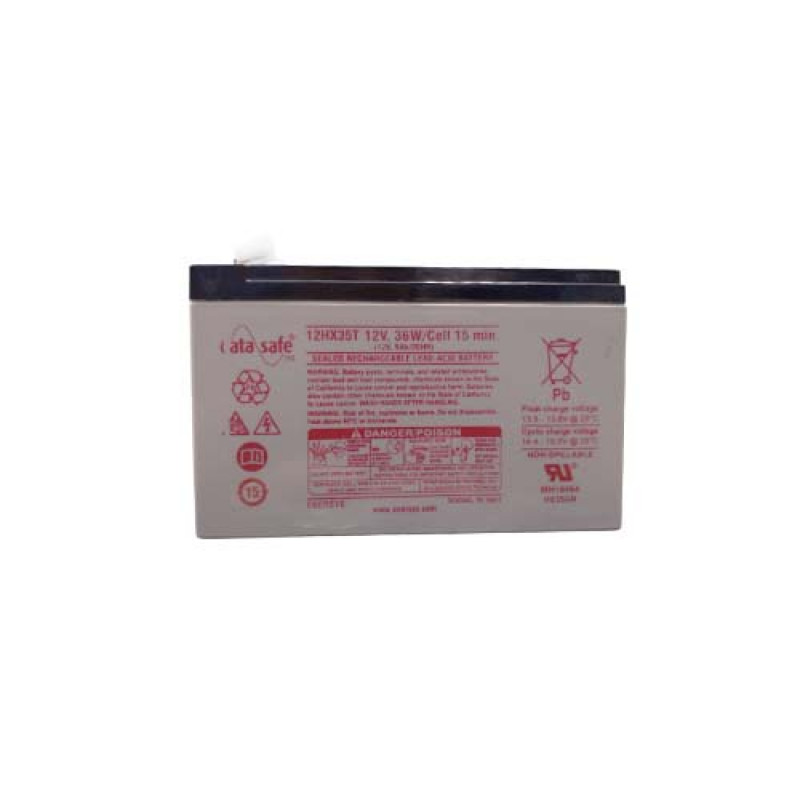UPS BATTERY DATASAFE 12V 9AH
- Notebooks & Acc
- AIO & PC
- Computer Peripherials
- Computer Accessories
- Printers & Acc
- Data storage
- Accessories
- Safety and security
- Network Devices
- Home & Kitchen appliance
- Phone systems
- Mobile Devices
- Smart Home
- Projectors and accessories
- Toolkits
- Gaming
- Beauty and Health
- Electrical equipment
- For Car
- POS System
Your shopping cart is empty!
Product Description
Model / Series: DataSafe HX / NPX (12V, 9Ah)
Electrical Parameters:
-
Nominal voltage: 12 V DC
-
Rated capacity: 9 Ah (at the standard discharge rate)
-
Terminal type: Faston 0.250″ (6.35 mm) tabs (common for UPS batteries)
-
Internal resistance: (typical for AGM/VRLA batteries in this class) — low milliohms (specific manufacturer spec may vary)
-
Maximum discharge current (short duration / peak load): depends on series (for NPX “high-rate” models this is higher)
Mechanical / Physical Dimensions & Weight:
-
Dimensions (without terminals): ~ 151 × 65 × 94 мм (L × W × H)
-
Height including terminals: ~ 97.5 мм
-
Weight: ~ 2,870 г (≈ 2.87 кг)
Performance & Usage:
-
Technology: AGM / VRLA (valve‑regulated lead acid, sealed, maintenance‑free)
-
Design / Expected life:
• HX version: “long-life” design, up to ~10 years in float / standby applications under optimal conditions
• NPX version: “high-rate” model, designed for UPS with higher discharge demands — expected life ~5 years in typical conditions -
Operating (float) charge voltage: typically ~13.5‑13.8 V in standby use (manufacturer datasheet recommended)
-
Cyclic / recharge charge voltage: ~14.4‑14.8 V (depending on temperature compensation)
-
Temperature range (typical for UPS batteries):
• Operating / discharge: ~ –15 °C to +40 °C (or +50 °C in some specs)
• Storage: broader, e.g. –40 °C to +70 °C -
Self‑discharge: a few % per month (e.g., ~3 % at 25 °C is common for AGM)
-
Suitable for standby / float / UPS / emergency backup and related applications
Safety & Construction:
-
Sealed design with safety valves
-
Gas recombination AGM design (absorbed electrolyte)
-
Flame‑retardant casing materials (in many series)
-
Hermetically sealed container to prevent leakage
-
Positive and negative grids often made of lead‑calcium‑tin alloy (to improve charge/discharge cycle performance)
 Turkmen
Turkmen Русский
Русский English
English



